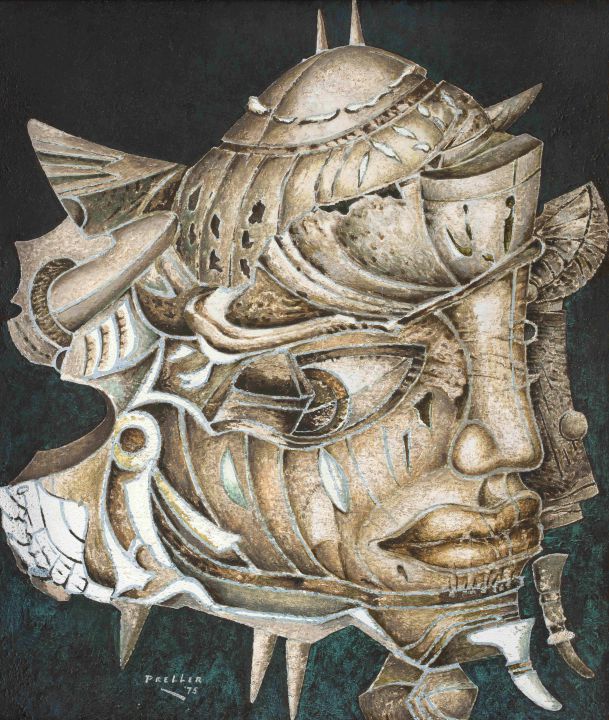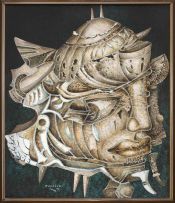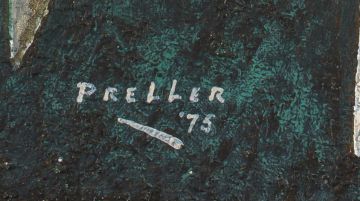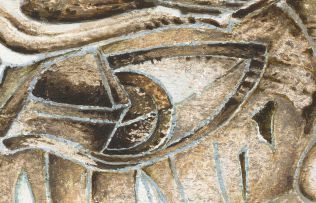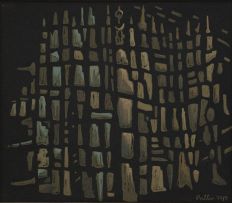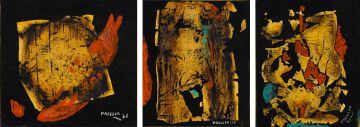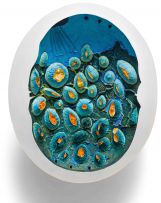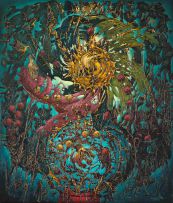Modern, Post-War and Contemporary Art, Decorative Arts, Jewellery and Fine Wine
Live Virtual Auction, 8 - 11 November 2020
Modern, Post-War and Contemporary Art Part II
About this Item
signed and dated '75
Notes
This lot is being sold to support a Cape Town Theatre struggling to survive in the current situation.
Exhibited
Goodman Gallery, Johannesburg, 12 to 29 November 1975, catalogue number 15.
Literature
Alexis Preller's Archangel was bought by the current owner from the artist's last exhibition during his lifetime, at the Goodman Gallery in 1975. The visitor asked the artist which work he should buy and Preller pointed unhesitatingly to Archangel. The exhibition was a triumph, but Preller unfortunately had little time to bask in the success as he died a few weeks later while undergoing surgery. The present lot was completed in that year, but it reworks themes and concerns begun many years earlier, as was typical of Preller's practice. The composition reproduces the idea of the disembodied, isolated head first developed in the Urn and African head paintings of the 1940s, but here continues, specifically, the series of 'Angel' heads that depicts imaginary mythological god-kings (and king-gods) familiar from Angel King (1971) and Space Angel (1971), among others. Preller was a keen student of traditional African sculpture, and the outlined almond eyes, full lips and scarified cheeks in the present lot are reminiscent of Yoruba Ibeji figures from Nigeria, with which he was familiar. The ritual pharaonic beard has its origins further north, in Egypt, where it was a marker of kingly power and divine authority, and the residual spiked helmet (visible also as worn by the band of warriors in the All Africa mural of 1953-55) derives from an imaginary archaic culture, whether African or Mediterranean. The work has an unusually monochromatic colour palette for Preller - none of the iridescent turquoises and luscious coral tones so characteristic of his work in the 1960s - and perhaps it speaks of a more sombre, introspective moment in the artist's life, when, weak from an energy-sapping illness, he depicts a spectral angel, a shadow of its earlier vivid manifestations.
